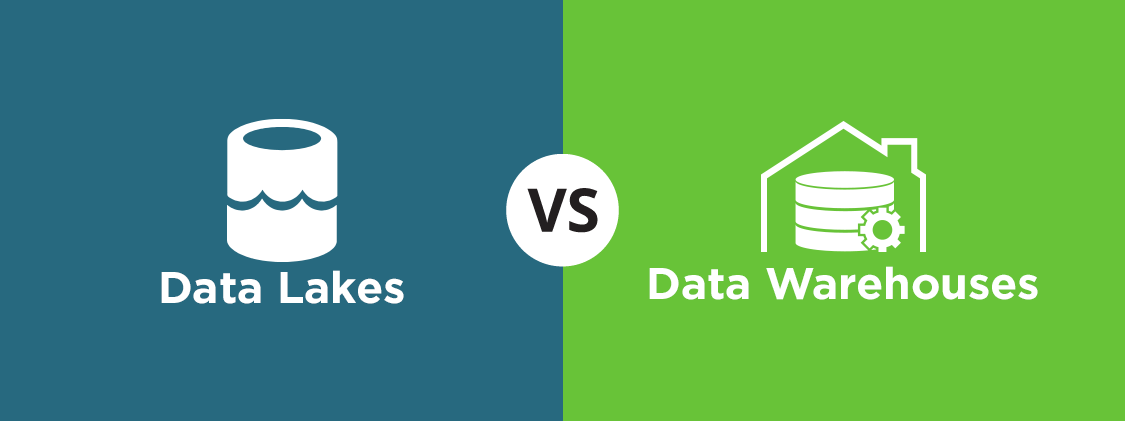Data Lakes vs. Data Warehouses
In this era of increasingly big data, we can gain advantage from absorbing and interpreting data from the huge stockpiles of information. From initial contact during marketing to the exit of a disgruntled customer, we can learn a great deal from each interaction if we capture the right data. And some of those captured elements can be voluminous, from IoT sensors to social media profile metrics. And that’s what leads us to need massive storage and processing requirements for a disparate catalog of information collected from across organizations.
In the early part of the 21st century — the aughts — “data warehouses” ruled in big businesses. With increasing computing power and decreasing storage costs, it became feasible to load more data to drive strategy. And over time, that data became less structured. More data, fewer rules about how it looked. So the crisp organization of data warehouses had to make room for “data lakes”. Services like AWS made it far more feasible and cost-effective too. Lakes and warehouses are both widely used for storing big data, but they are not synonymous. Data lakes are not data warehouses, so let’s look at what makes each important and useful.
What Is a Data Warehouse?
A data warehouse is a central data repository that facilitates analysis. Typically, organizations load data on a regular basis from transactional databases, cleaning and preparing data on the way in. Analysts, engineers, data scientists, and stakeholders can use a variety of business intelligence and data analytics tools to access the data in a data warehouse.
What Is a Data Lake?
A data lake is an unstructured data repository that facilitates analysis. Organizations can ingest data from a wide variety of sources, without the necessity of a cleaning and preparation process. Since it’s more raw in nature, the data is better suited to more technical users, such as data scientists, for analysis and reporting.
What are the Differences Between Data Lakes and Data Warehouses?
Setup
Data lakes typically retain all the source data, whereas data warehouses only retain key data. They use ELT (Extract/Load/Transform), which is raw. Data warehouses utilize ETL (Extract/Transform/Load) for ingestion. Such processing often alters the source data.
Format
Data lakes work with all kinds of data, defining the schema after storing the data. Data warehouses work with traditional “column/row” formatted data, defining the schema before storing the data.
Strategy
With less constraint on loading and formatting, data lakes can be whatever you want them to be. In contrast, data warehouses are purpose-built, with plans for specific purposes. Conversely, structured data warehouses allow strategic use of specific data.
Users
Data lake users access data before it has been transformed, cleaned and structured. Because they are unstructured and raw, they are better suited for data scientists who can perform in-depth analysis. Because they are structured for organizational reporting, data warehouses are suitable for general business use by a variety of staff.
Data Lakes Are Not Data Warehouses
We felt compelled to share this story so we’re all speaking the same language. When we hear the market using these terms interchangeably, it gets confusing. Yes, there’s too much jargon in cloud computing, so we need to be cognizant of the areas where we can create unnecessary work. If you’re looking for a way to remember the difference, visually think of a lake, with a curvy shore and many different animals, contrasted with an organized warehouse, with boxes of similar products stacked neatly in rows. You’re now ready to load one or the other with data!


Leave A Comment